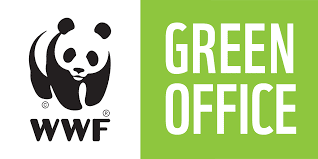5 facts about plastic packaging
When discussing environmental impacts, plastic often comes to the fore in a very negative light. Plastic is easily perceived as litter, and images of plastic plates in the sea come to mind. But the fact is that plastic is only a problem when it ends up in the environment. Up to 60% of marine litter comes from China, Indonesia, the Philippines, Vietnam and Thailand. The main reason for plastic litter in these countries is their underdeveloped waste management.
Fortunately, the situation is better in Finland! Advanced waste management, high recycling rates and efficient energy recovery are examples of how Finland has succeeded in reducing the amount of plastic debris in the environment. Before entering the recycling chain, plastic packaging plays an important role in protecting food and reducing food waste.
1. Improved shelf life
Plastic packaging protects food from moisture, bacteria and oxygen, which can cause food spoilage. For example, a cucumber wrapped in plastic will keep much longer in the fridge than an unpackaged cucumber. Similarly, a triangular loaf in a plastic box will keep better than a triangular loaf in a cardboard box. The longer shelf life of food reduces unnecessary food waste. Packaging choices can easily prevent food waste in households.

2. Product safety
Plastic is a hygienic material that protects food from bacteria and other pathogens and does not release odours or flavours into the food. The use of plastics in food packaging is very strictly regulated by law, so plastic packaging can be used safely in everyday life.
3. Recyclability
The best plastic is recycled plastic! In Finland, waste management is excellent and sorted plastic is recycled. Plastic packaging can be sorted in the plastic bin of your housing association. And if you don’t have a plastic bin in your yard, you can take your lightweight plastic packaging to the nearest Rinki -recycling point when you go shopping. Recycled plastic packaging is used to make plastic cups, tubes and buckets, for example. It is also worth remembering that the collection of all materials is not as widespread as the collection of plastics. If recycling is not possible, putting plastic in mixed waste is not a bad solution; the important thing is that plastic packaging does not end up in the environment.
4. Versatility
Plastic can be used to form a wide range of food packaging that effectively protects products. Plastic packaging can be flexible, rigid, colored or transparent, and can be made resealable or microwaveable, for example, by adding different properties. Plastic packaging is resistant to liquids and grease, and many are also resistant to freezing and heating. The versatility of plastic allows for a wide range of packaging needs and food is always at the forefront!
5. Less waste
Plastic packaging can be very lightweight and thin, yet durable. Plastic can provide effective protection for food with minimal material usage, reducing waste in food packaging. For example, plastic bags and films protect food with minimal material consumption. Lightweight packaging solutions also reduce transport costs and fuel consumption, thus reducing the carbon footprint.
Summary
Plastic packaging is not just waste, but plays an important role in protecting food. Without plastic, it would be difficult to transport food from the shop to the home and to store it. Not to mention food waste! Plastic packaging provides excellent protection, extending the shelf life of food and reducing waste. The environmental impact of plastic packaging is much lower than often thought. Food waste, i.e. food thrown in the trash, is a much bigger source of emissions than the production of packaging. So remember to choose your packaging wisely, buy only what you need and make sure it is recycled.









